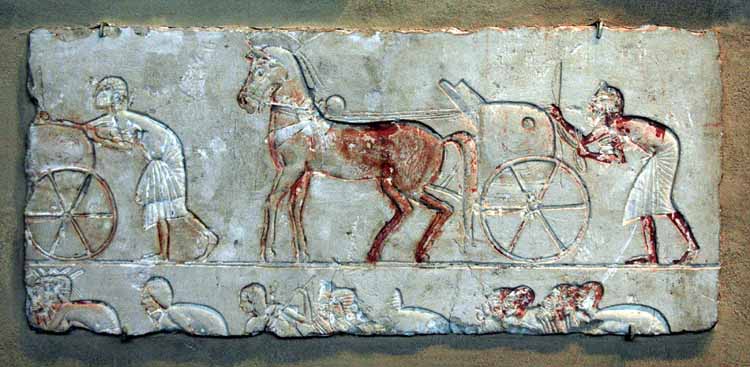
Traditionally, processions of priests carrying divine images in shrines or
sacred boats were an important part of religious life in Egypt. Akhenaten,
having abolished all such images. substituted royal processions in which he
and the queen appeared to the people on stately chariots. These processions
started at the royal palace in the North City, proceeded along the Royal
Road, and ended at the Great Temple, where the king performed the offerings
to the Aten.
The relief come from representations showing the royal retinue once it had
arrived at the temple. The hooves of a horse and the feet of a charioteer
are seen in the upper register of the top relief, and a portion of a horse's
neck encircled by a leather strap is preserved in the lower register.
Found in the sanctuary of the Great temple at Amarna.